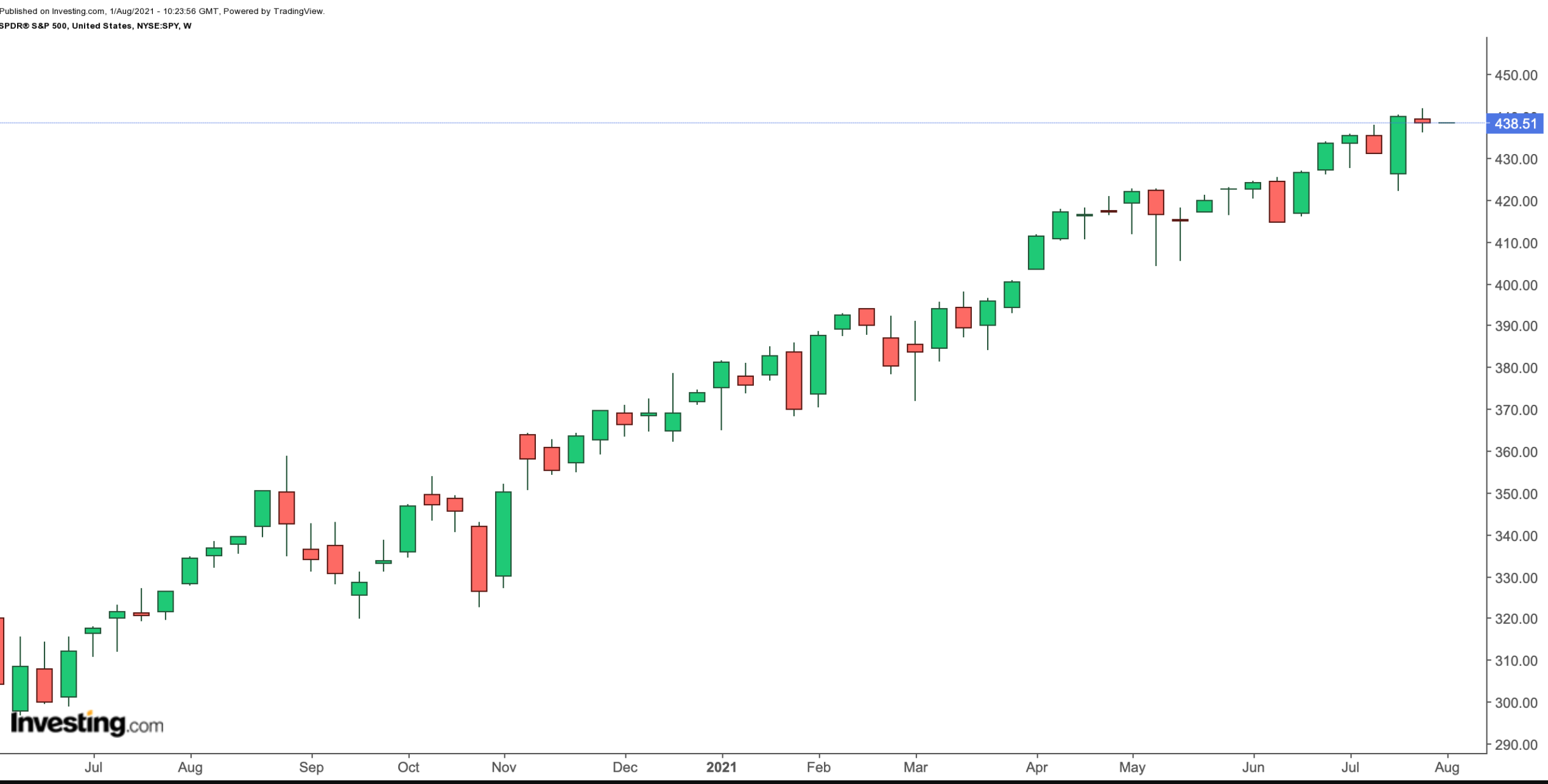In July, broader equity markets performed strongly, and the final days of the month brought new highs to the Dow Jones Industrial Average, the S&P 500 as well as the tech-heavy NASDAQ 100 index.
Meanwhile, inflation has gone over 5% in the US for the first time since 2008. Yet calmer words from Fed Chair Jerome Powell pushed the 10-year Treasury yield to under 1. 23 at the end of the month. As well, market participants continued mulling the possible implications of the Delta variant on the economy.
Headlines around corporate earnings garnered attention, especially in the second half of the month. A significant number of earnings reports surprised to the upside in Q2.
With that information, we now review exchange-traded funds (ETFs) that were clear winners or losers in July. Understandably, our list is not comprehensive and does not include leveraged and inverse ETFs.
A number of these funds could inspire readers to put together long-term diversified portfolios within their risk/return parameters.
ETFs Following The 3 Major U.S. Indices
Before we move on to best performers, let's take a look at funds that give exposure to the three most followed U.S. indices—the Dow Jones, S&P and NASDAQ. These three ETFs, which act as proxies for those major indices, deserve our attention:
SPDR® Dow Jones Industrial Average ETF Trust (NYSE:DIA), which tracks the Down Jones Industrial Average—up 1.3% in July (covered here).

SPDR® S&P 500 (NYSE:SPY), which tracks the S&P 500 index—up 2.2% in May (covered here).

Invesco QQQ Trust (NASDAQ:QQQ), which tracks the NASDAQ 100 index— up 6.3%YTD (covered here).

22 Additional Winners
Global X MSCI China Materials ETF (NYSE:CHIM) — up 8.3% for the month;
United States 12 Month Natural Gas Fund (NYSE:UNL) — up 6.8% in July (covered here);
Pacer Benchmark Industrial Real Estate SCTR ETF (NYSE:INDS) — up 6.7%;
Invesco Water Resources ETF (NASDAQ:PHO) — up 5.3% (covered here);
Invesco S&P 500® Equal Weight Health Care ETF (NYSE:RYH) — up 5.1% (covered here);
iShares MSCI Turkey ETF (NASDAQ:TUR) — up 5.2%;
Health Care Select Sector SPDR® Fund (NYSE:XLV) — up 4.9% (covered here);
The Acquirers Fund ETF (NYSE:ZIG) — up 4.8%;
The Real Estate Select Sector SPDR Fund (NYSE:XLRE) — up 4.6% (covered here);
Vanguard Real Estate Index Fund ETF Shares (NYSE:VNQ) — up 4.3% (covered here);
iShares Global Materials ETF (NYSE:MXI) — up 3.7% (covered here);
First Trust NASDAQ Cybersecurity ETF (NASDAQ:CIBR) — up 3.1% (covered here);
VanEck Vectors Steel ETF (NYSE:SLX) — up 3.1% (covered here);
ProShares NASDAQ-100 Dorsey Wright Select ETF (NASDAQ:QQQA) — up 2.7% (covered here);
Franklin LibertyQ U.S. Equity ETF (NYSE:FLQL) — up 3.0%;
IQ Healthy Hearts ETF (NYSE:HART) — up 2.9% (covered here);
Global X Adaptive U.S. Risk Management ETF (NYSE:ONOF) — up 2.2% (covered here);
Invesco CurrencyShares® Japanese Yen Trust (NYSE:FXY) — up 1.4% (covered here);
WisdomTree Global ex-U.S. Quality Dividend Growth Fund (NYSE:DNL) — up 1.1% (covered here);
iShares Gold Trust (NYSE:IAU) — up 0.8% (covered here);
iShares MSCI Global Min Vol Factor ETF (NYSE:ACWV) — up 0.8% (covered here);
iShares iBoxx $ Investment Grade Corporate Bond ETF (NYSE:LQD) — up 0.3% (covered here).
Bottom Line
One of the most important takeaways for investors in July was the robust performance of healthcare and real estate stocks and funds. Natural gas was also hot.
Readers might also be interested to know that Microsoft (NASDAQ:MSFT) became only the second US business after Apple (NASDAQ:AAPL) to go over a market capitalization (cap) of $2 trillion. Meanwhile, Procter & Gamble (NYSE:PG) warned of higher commodity prices and cost headwinds.
In Q2, markets kept a close eye on China as well. The Asian nation's government has been putting increased regulatory pressure on the 'platform economy,' companies, such as big tech, digital payments, and online education. As a result, stocks and funds that focus on them came under pressure. Markets noted that Cathie Wood of ARK Invest exited Chinese stocks.
In August we might see lower trading volumes across the board. Traders and investors will likely take some time off as most of the Northern Hemisphere sees scorching temperatures. However, headlines regarding inflationary pressures, COVID-19, and potential forward guidance are still likely to move the markets.
